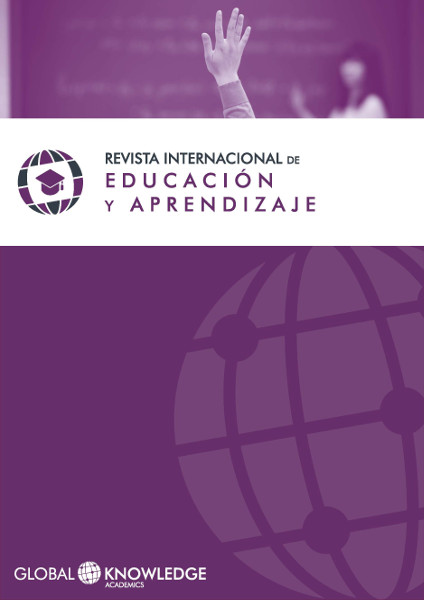Educational Interventions for Intellectual Giftedness
DOI:
https://doi.org/10.37467/gka-revedu.v5.1528Keywords:
High Skills, Giftedness, Talent, Educational InterventionsAbstract
Gifted students are known for being different in their cognitive skills and abilities, both in their development as well as in their application. This article analyzes appropriate educational strategies for this specific intellectual population.
Downloads
Global Statistics ℹ️
|
1777
Views
|
1688
Downloads
|
|
3465
Total
|
|
References
Acereda, A. (1996). La superdotación: estado de la cuestión. Tesis de Licenciatura. Universitat Rovira i Virgili. Tarragona.
Acereda, A. (2000). Metacognición y superdotación: un estudio empírico de su relación a partir de la resolución de problemas. Tesis Doctoral. Universitat Rovira i Virgili. Tarragona.
Acereda, A. (2008). Superdotación y escuela: una relación incierta todavía hoy. Extraído el 20 de mayo de 2015, de: http://www.educaweb.com/noticia/2008/07/07/superdotacion-escuela-relacion-incierta-todavia-hoy-3094/
Acereda, A. (2010). Niños superdotados. Madrid: Pirámide.
Acereda, A. y Sastre, S. (1998). La superdotación. Madrid: Síntesis.
Acereda, A. y López, A. (2012). La problemática de los niños superdotados. Madrid: Síntesis.
Arroyo, S., Martorell, M. y Tarragó, S. (2009). Los superdotados. La realidad de una diferencia. Barcelona: Terapias Verdes.
Benito, Y. y Renzulli, J. (2003). Manual internacional de superdotados: manual para profesores y padres. Madrid: EOS.
Berché, J. (1999). La superdotación infantil. Del mito a la realidad. Barcelona: ISEP Universidad.
Betancourt, J. (2004). Reflexiones en torno a los niños superdotados, la creatividad y la educación. Extraído el 18 de mayo de 2015, de:http://ww2.educarchile.cl/UserFiles/P0001%5CFile%5Cpsicologiapdf-117-reflexiones-en-torno-a-los-ninos-superdotados-la-creatividad-y-la-educacion.pdf
Blanco, Mª C. (2001). Guía para la identificación y seguimiento de alumnos superdotados: educación primaria. Bilbao: CISS Praxis.
Coleto Rubio, C. (2009). Intervención educativa con alumnado que presenta altas capacidades intelectuales. Extraído el 17 de mayo de 2015, de: http://www.csi-csif.es/andalucia/modules/mod_ense/revista/pdf/Numero_17/CLARA_COLETO_RUBIO_1.pdf
Del Caño, M. (2001). Formación inicial del profesorado y atención a la diversidad: alumnos superdotados. Revista Interuniversitaria de Formación del Profesorado, nº 40, 135-146.
Genovard, C. (1988).Excepcionalidad del superdotado. En J. Mayor, Manual de Educación Especial, pp.613-632. Madrid: Anaya.
Grau, S. y Prieto, Mª D. (1996). La formación del profesorado de alumnos superdotados. Revista Interuniversitaria de Formación del Profesorado, nº 27, 127-139.
Hume, M. (2000). Los alumnos intelectualmente bien dotados. Barcelona: Edebé.
Prado, R. (2004). Creatividad y sobredotación: diagnóstico e intervención psicopedagógica. Tesis Doctoral. Málaga: Universidad de Málaga.
Renzulli, J. (2010). El rol del profesor en el desarrollo del talento. Revista Interuniversitaria de Formación del Profesorado, vol.13, nº1, pp. 33-40.
Sastre, S. (2004). La superdotación a examen: un abordaje psicológico. Faísca: Revista de Altas Capacidades, nº11, 5-15.
Soto, T. (2000). La sobredotación: Contextualización y experiencias pedagógicas en España. Extraído el 17 de mayo de 2015, de http://www.psicopedagogia.com/articulos/?articulo=444
Tourón, J. (1998). La superdotación intelectual: modelos, identificación y estrategias educativas. Pamplona: EUNSA
Verhaaren, P.R. (1991). Educación de Alumnos Superdotados. Una introducción a sus características, necesidades educativas y a las adaptaciones curriculares que precisan. Madrid: Ministerio de Educación y Ciencia.
Downloads
Published
How to Cite
Issue
Section
License
Those authors who publish in this journal accept the following terms:
-
Authors retain copyright.
-
Authors transfer to the journal the right of first publication. The journal also owns the publishing rights.
-
All published contents are governed by an Attribution-NoDerivatives 4.0 International License.
Access the informative version and legal text of the license. By virtue of this, third parties are allowed to use what is published as long as they mention the authorship of the work and the first publication in this journal. If you transform the material, you may not distribute the modified work. -
Authors may make other independent and additional contractual arrangements for non-exclusive distribution of the version of the article published in this journal (e.g., inclusion in an institutional repository or publication in a book) as long as they clearly indicate that the work was first published in this journal.
- Authors are allowed and recommended to publish their work on the Internet (for example on institutional and personal websites), following the publication of, and referencing the journal, as this could lead to constructive exchanges and a more extensive and quick circulation of published works (see The Effect of Open Access).













